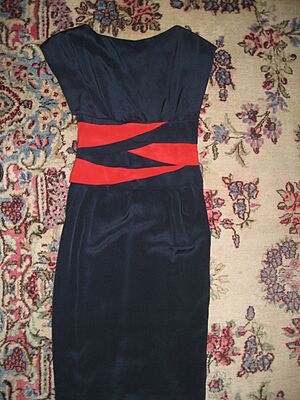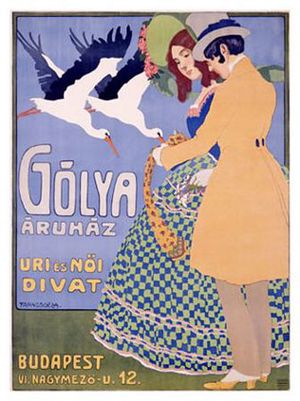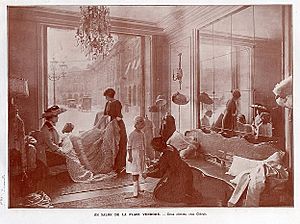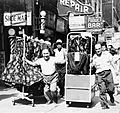Fashion design facts for kids
Fashion design is the exciting art of creating clothes and accessories. This includes designing clothes, costumes, hats, purses, bags, and shoes.
Fashion designers try to make clothes that are both useful and good-looking. They think about who will wear the clothes and where they will be worn. Designers use many different materials, colors, patterns, and styles.
Some clothes are made just for one person. This is called haute couture or bespoke tailoring. But most clothes today are made for many people. This is known as the mass market, especially for everyday wear.
Contents
The History of Fashion Design
Fashion design as we know it began in the 19th century. A man named Charles Frederick Worth was very important. He was the first designer to sew his own label into the clothes he made.
Worth was so successful that he told his customers what they should wear. Before him, dressmakers usually followed what their clients wanted. The word couturier was first used to describe Worth. Clothing made after 1858 is considered fashion design. Older clothes are studied as costume design.
In those days, many design houses hired artists. These artists would sketch or paint designs for clothes. They showed these pictures to clients. This was cheaper than making a real sample of the garment. If a client liked a design, they would order it. This is how designers started sketching their ideas.
Different Kinds of Fashion
Clothes made by fashion companies usually fit into three main groups. These groups can also be divided into smaller, more specific types.
What is Haute Couture?
Until the 1950s, most fashion clothes were custom-made. This was called made-to-measure or haute couture. Each piece of clothing was made for a specific customer.
A couture garment is ordered by one person. It is usually made from very good, expensive fabric. It is sewn with great care and detail. Often, it uses hand-sewn techniques that take a lot of time. The look and how well it fits are more important than the cost. Haute couture does not make a lot of money for fashion houses. But it is very important for their fame and to get attention.
Understanding Ready-to-Wear Fashion
Ready-to-wear clothes are a mix of haute couture and mass market styles. They are not made for one person. However, a lot of care goes into choosing and cutting the fabric.
These clothes are made in small amounts. This helps to keep them special and unique. Because of this, they can be quite expensive. Ready-to-wear collections are shown by fashion houses each season. This happens during Fashion Week. Fashion Week takes place twice a year in big cities. The main seasons are spring/summer, fall/winter, resort, swim, and bridal.
The Mass Market for Clothes
Today, the fashion industry mostly sells to the mass market. The mass market makes clothes for many different customers. They use trends set by famous designers.
These companies often wait a season to see if a style becomes popular. Then, they make their own versions of the original look. To save money and time, they use cheaper fabrics. They also use simpler ways to make clothes, often with machines. This means the final product can be sold at a much lower price.
Images for kids
-
Men pulling carts of women's clothing in Garment District, New York, 1955
-
Red carpet fashion: Italian actors Gabriel Garko and Laura Torrisi wearing designer formal wear at Venice Film Festival, 2009
See also
 In Spanish: Diseño de moda para niños
In Spanish: Diseño de moda para niños









